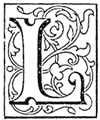| Home -> John J. Newbegin -> Little Literary Lights - Our Garden | |||
|
Our Garden
 Lord Bacon wrote, "God Almighty first planted a garden, and, indeed, it is the purest of human pleasures; it is the greatest refreshment to the spirits of man, without which buildings and palaces are but gross handiworks." Lord Bacon wrote, "God Almighty first planted a garden, and, indeed, it is the purest of human pleasures; it is the greatest refreshment to the spirits of man, without which buildings and palaces are but gross handiworks."It was the Rev. P. A. Sheehan who said, "Flowers are the sweetest thing God has made and forgot to put a soul in," and to those who love them what a wonderful source of recreation they are and what a comfort and pleasure in our hours of ease! They speak a language that is only interpreted by those who understand and appreciate their beauty and modest sentiment. In all her forms, Nature makes no more brilliant display than in the almost continuous kaleidoscopic coloring of their blossoms which, added to their soft, redolent fragrance, gives one as close a touch of Paradise as it is permitted mortals to enjoy. Our garden consists of about an acre of sweet-scented trees, shrubs, vines and flowers - one of God's acres it might appropriately be termed, for it is a tract dedicated to show off the best in Nature He has provided for us to feast our eyes upon. How many delightful hours it has afforded us, from the first flowering of the orange-colored Kerria Japonica, in early spring, to the lingering farewell of the purple bloom of the Heather in Winter! I am thankful to be gifted with a sense of their value and feel sorry for those so dense as to be dull or ignorant of their pleasure-giving qualities. What a song of contentment they sing to the interested, what a field of wonder and revelation to those who have penetrated their secrets! For flowers we should bless the Lord every day of our lives. How dreary life would be without them - a void 'twould be impossible to fill, and can only be estimated by imagining their total annihilation. With the awakening of spring, the garden suddenly takes on new life - evidences of renewed vigor are shown everywhere in the bursting buds, peeping leaves and delicious aromatic odors of the season. About the first of the shrubs to flower is the Kerria Japonica, a deep, rich orange in color, closely followed by the Tamarix Africanus, a light pink flowery shrub without leaves; with it comes the light graceful Forsythia or Golden Bell, a canary yellow, and then the Deutzia and Rosea Weigela, a mass of pink, then the Syringa or mock orange and the Spirea Marie Van Hauteii in their white blossoms, and the red and yellow wild currants; the lavender Lilacs and the tall yellow Laburnum and purple Canadensis or Judas tree, with their grape-like bunches of flowers hanging in great clusters, and the flowering Japanese Quince and Crabapples. The Genestas or Broom, the yellow Spanish and maroon Andrea; then the Abutilon or Golden Fleece, with its bell-shaped flowers; the ever-blooming variegated Lantanas; the blue Plumbago and the Datura or Angels' Trumpet, and Viburnum or snowball with its white balls; the sweet-scented yellow jasmine, pink Oleander, the dark yellow Berberis Darwini, Halesia or Silver Bell, Habrothammus Elegans variegated, yellow Cestrum and red Callisteinon or Bottle Brush, the Crataegus or Christmas Berry, and then the shrubs noted for the coloring of their leaves like the Mahonia or Oregon Grape, Golden Elder and Silver Thorn. Like all others, we take much pride in our roses, of which we have several hundred varieties. A great favorite is the single shell-pink Irish Elegans, the red Jacqueminot and Marie Henrietta, pink Caroline Testaut, and La France, yellow Marechal Niel and Cloth of Gold, the copper Gold of Ophir and Sole d'Or, the white Madame Druski and La Marque; the largest of them all, red Paul Neyron and white Mildred Grant; the smallest Cecil Brunner and Bankshires; the climbing red Olga de Wurtemburg, yellow Cloth of Gold and pink clustered Dorothy Perkins. Scattered all about the place, over the fences and about the buildings, are the vines. The brilliant Bougainvillia, purple Clematis, red Trumpet Vine, violet Wistaria, Honeysuckle, Dutchman's Pipe, Pea and Clianthus; and then the annuals like Dahlias, Hollyhocks, Sunflowers and Sweet Peas; the old-fashioned plants, such as Heliotrope, Rosemary, Lavender, Mignonette, Marguerites, Geraniums, Carnations, Fuchsias and Calla Lilies. Scattered here and there are the flowering trees - the red Japanese Cherry, purple Paulownia Imperalis, and white Almonds, pink and blue Locusts, red Eucalyptus, yellow Acacia, pink Albizzia, red Chestnut, and white Aziria; also may be included those with beautifully colored leaves like the purple Beech, silver Birch and Japanese Maple; and we must not forget the tall privet hedge that encircles the yard or the everblooming yellow border leading to the house of yellow Hypericum which attracts the attention of callers, or the Violet, Daisy and Pansy beds. There is always much to do, but then the pleasant hours of budding, grafting, pruning and transplanting and the fun of watching things grow and bloom and the interest you take in the weather conditions, to say nothing of the houseful of blossoms, will amply reward you. It is a delightful, restful, health-giving occupation, mentally as well as physically. In Japan they never ask for a man's house, but inquire the way to his garden. |
|||